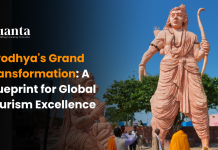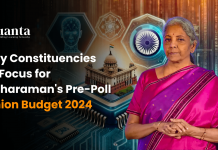What is the CAA?
According to the CAA, Hindu, Christian, Buddhist, Jain, Sikh, and Parsi migrants who have entered India illegally-that is, without a visa-on or before December 31, 2014 from the Muslim-majority countries of Pakistan, Afghanistan, and Bangladesh and have stayed in the country for five years, are eligible to apply for Indian citizenship.
Why is the provision extended only to people of six religions, and not Muslims, and why does it apply only to people coming from these three countries?
The Union government claims that people of these six faiths have faced persecution in these three Islamic countries, Muslims haven’t. It is, therefore, India’s moral obligation to provide them shelter.
So, is the provision open only to those who have been persecuted in the three countries?
No, the CAA itself does not mention the word ‘persecution’ anywhere, contrary to the BJP’s assertion that the act covers only persecuted people. And since persecution is not the criterion, it does discriminate against illegal Muslim immigrants from these three countries.
If the act is not only about people facing persecution, why are migrants from other countries — such as Hindus from Sri Lanka — not eligible to
apply for citizenship under this act? Or Muslim (Rohingya) migrants from Myanmar?
The government says this is a time-bound provision to provide relief to immigrants who have suffered in Islamic countries because India got divided on religious lines. India has, from time to time, provided citizenship to immigrants of all religions from different countries. Sri Lankan Tamil Hindus, too, were given citizenship in the 1970s and 1980s.
The Union government has openly said that the Rohingyas are a threat to national security. Even an Islamic country like Saudi Arabia has deported Rohingya migrants. The BJP’s logic is that Hindu migrants have only India to fall back on while Muslim migrants have several Islamic countries to seek shelter in.
Is it not unconstitutional and against India’s secular ethos to discriminate on religious lines?
Sixty-five writ petitions have been filed in the Supreme Court challenging the legal validity of the CAA. The apex court has asked the Union government to respond by the second week of January. Constitutional expert Subhash Kashyap says there are arguments both in favour of and against the act.
“Article 14 says that all persons are entitled to equality, but there have been several Supreme Court judgments which say that reasonable classification can be applied to this principle of equality. Even all fundamental rights are subject to
reasonable classification. Anyone can challenge the act in the apex court and the future of the act will depend on whether the Supreme Court accepts the classification made within this act as reasonable enough,” he says.
(UPDATE: No hearing has happened since the last one year)
Why do we need this new provision? Don’t we have enough provisions to offer citizenship to outsiders — Adnan Sami, for example?
Yes, we do have, but they are applicable only to those who have entered India legally, that is, with a valid visa. Sami was in India legally.
Illegal immigrants-who cross the border without any paperwork-can’t apply for citizenship and, when caught, face prosecution. India is among the few countries in the world that has neither a national refugee protection framework nor an immigration policy.
It is also not a signatory to the 1951 UN Refugee Convention or its 1967 Protocol. India has also not ratified the 1954 UN Convention on Statelessness or the 1961 UN Convention on Reduction of Statelessness. It is under no obligation, therefore, to provide rights set out in the conventions to refugees. It takes decisions on granting long-term visas to refugees essentially on an ad hoc basis.
In India, while refugees from neighboring countries (barring Myanmar) can seek protection directly from the government and are issued documentation by the Foreigner Regional Registration Officers (FRROs), non-neighboring countries and Myanmar come under the UNHCR mandate that assesses each individual asylum claim and issues an ID card to those recognized as refugees after seeking biometric data for registration, followed by a comprehensive interview by a UNHCR officer.
The whole process takes anywhere between six months and a year. The government currently allows refugees, including Rohingya, with UNHCR
IDs to apply for a “long-term visa”, which the government issues on a case by case basis. However, this doesn’t make them Indian citizens.
Why is Assam protesting against the CAA?
Though this legislation covers refugees from three countries, the indigenous people of Assam fear it will primarily benefit illegal Bengali Hindu migrants from Bangladesh who have settled in large numbers across the state.
The Assamese fear that if citizenship is granted to Bangla-speaking Hindu immigrants from Bangladesh, they will outnumber Assamese-speaking people in the state. They cite the example of Tripura, where Bengali-speaking Hindu migrants from Bangladesh now dominate political power, pushing the original tribal population to the margins.
Unlike in the rest of India, where people are questioning the exclusion of Muslims, the Assamese don’t want immigrants of any religion, whether Hindu or Muslim.(vvvvv imp. Remember, Assam’s fight isn’t communal, they want to drive out illegal immigrants, be it Hindus or Muslims)(If CAA is implemented, Hindu illegal immigrants will be given citizenship and the local Assamese do not want that)
ASSAM NRC
The Assam NRC has a different historical context. The first NRC in Assam was prepared in 1951, owing to widespread allegations of massive, unabated illegal immigration from Bangladesh. The first NRC was published by recording the particulars of all the persons enumerated in that year’s census. The 1951 NRC
found that nearly 1.5 million illegal immigrants-one-sixth of Assam’s population-lived in the state. However, there is no account of what happened to those illegal immigrants.
Three decades later, at the end of a six-year-long agitation in Assam against illegal immigrants from Bangladesh, the Union government and student leaders signed the Assam Accord in 1985. As part of the accord, the 1951 NRC would be updated. That’s why people residing in Assam were asked to provide documents showing their connection to those whose names appeared in the 1951 NRC.
The Assam Accord accepted any illegal migrant entering the state before March 25, 1971.(It had no religious bias) But anyone entering after the specified date would fail to qualify as an Indian. However, there were delays and delays and no government actually brought out a comprehensive NRC.
LATEST NRC IN ASSAM
Under an SC bench headed by the then Chief Justice, Ranjan Gogi, an NRC was carried out in Assam in 2019. The widespread fears of mass illegal immigration fell flat when only 1.9 million people were excluded from the final NRC from a total population of 31 million. Even among those 1.9 million, there were a lot of discrepancies like out of a family, a few people making it to the list, and a few not making it. Thus, the NRC process in Assam was an absolute logistical nightmare.
Of the 1.9 million people excluded from the NRC, 1.3 million are Hindu and from indigenous tribes, as unofficial sources confirm. That also explains why the BJP has rejected the NRC in Assam
(This shows that a majority of illegal immigrants in Assam belong to the Hindu community)(The CAA will protect all these Hindu illegal immigrants, but not the remaining Muslim illegal immigrants)
The Assamese are unhappy because they do not want people to be declared illegal on religious grounds.
The Assamese want the NRC, but not the CAA which provides refuge and citizenship to the 1.3 million Hindu illegal Hindu immigrants living in Assam.
Thus, the CAA is antithetical to the Assam Accord, which was completely secular in nature.
How is the CAA connected to the NRC?
The two have no connection. The NRC is a count of legitimate Indian citizens. Barring the state of Assam, this exercise has never been done anywhere in the country. So, the two have no connection per se.
However, the home minister of India, Amit Shah stoked controversy by saying that an all-India NRC would be carried by 2024, and he said it in conjunction with the CAA.(The famous or rather infamous “chronology” statement)
This has led many Indian Muslims to believe that when an all-India NRC is carried out, Hindus are by default protected by the CAA, and the burden of
proving citizenship rests solely on the Muslims. This was widely seen as an Anti-Muslim measure by a section of the Indian and the global press.
But the CAA does exclude Muslims.
The CAA excludes Muslim immigrants who have entered India illegally, not legal Indian Muslim citizens. (but citizens had reasons to worried too, because a lot of India’s poor citizens might not have documents)
However, since the CAA will provide citizenship to non-Muslim illegal immigrants from three countries, only Muslim immigrants will be left out when the NRC is rolled out.
Is it not a clever way for the RSS-BJP to realize their dream of a Hindu Rashtra?
Partly true. The CAA will provide citizenship to illegal non-Muslim migrants from three countries and who have entered India before December 31, 2014. An honest NRC should exclude illegal migrants of all religions. That, however, will depend on the intent of the government and a framework that is flawless, a huge challenge for Amit Shah.
There is nothing wrong per se with the exercise of detecting illegal migrants-irrespective of their religion-but to discriminate on the basis of religion is against India’s secular ethos, especially when the CAA does not specify that it will cover people who have faced religious persecution.
Do we really need an all India NRC?
On paper, there is nothing wrong with counting the legal citizenry of the country. But if it becomes a basis for discrimination or put to other uses, then it is certainly problematic. Besides, it will be an enormous exercise given the size of our population and other complexities.
This was evident in Assam, where even genuine Indian citizens got excluded and many illegal migrants allegedly, got included. Before the government embarks on this exercise, it also needs to put in place a policy on stateless people. India does not have one yet, and keeping illegal migrants in detention centers is something
the country can ill afford.
PROTESTS AGAINST CAA-NRC
The Citizenship Amendment Act and the proposed National Register of Citizens led to widespread protests all over the country. Eminent intellectuals, activists, select actors, students showed their dissent against the law. The protests, even though dominated by Muslims, had a large number of people from other religions too.
ASSAM:
Assam saw widespread protests against the CAA because it gave protection to a large number of illegal Hindu immigrants, thus violating the Assam Accord. It is important to understand that Assam’s reasons for a protest were different from that of the rest of the country. Assam wanted the implementation of the NRC,
without any religious bias, while protesters across other parts of India vehemently expressed their dissent against the CAA-NRC duo.
Students, intellectuals, poets came together on the streets in Assam, where the protests did turn violent, and 7 people were allegedly killed in police firing.
REST OF THE COUNTRY:
Most parts of the country saw widespread protests and demonstrations, against a law that was seen to be the final nail in the coffin of a secular India. It would be fair to say that Uttar Pradesh and Delhi were the epicenter of the protests.
The Shaheen Bagh sit-in protest by Muslim women and children went on for over 100 days before Covid 19 struck and social distancing norms had to be enforced. Shaheen Bagh made global headlines and was seen as one of the greatest protests in the history of independent media, led by Muslim women and children, braving it out in the freezing cold of Delhi winters.
GOVT CRACKDOWN ON PROTESTORS
The government had clearly failed to assuage the feelings of the Muslim community, which had reason to believe that the law was discriminatory. Instead of understanding the fears and concerns of the protestors, the government went on to delegitimize the protests, with several BJP functionaries using words like “Mini Pakistan”, “Jihadis”, and “Anti-Nationals”
Apart from that, the government cracked the whip on the protestors with the help of the police. Over 50 people were killed in police firing in Uttar Pradesh, Delhi, and Assam.
The police also used its brute force to enter universities like the Jamia Millia Islamia and the Aligarh Muslim University to allegedly beat up peacefully protesting students. These incidents further sparked another wave of protests throughout various colleges and universities in the country, led by students standing in solidarity with their peers at Jamia, JNU, and AMU.
DELHI RIOTS
The nation was left in a state of shock when Delhi burnt in a confrontation amongst pro and anti CAA protesters, just after republic day in 2019. The riots, unprecedented in Delhi, left 53 dead, most of them Muslims. Houses were burnt, shops were vandalized and public property was damaged. Hate speeches had created a frenzy of emotions on both sides, which culminated in the death of 53 people and the traumatization of thousands.
To structure your CAT online preparation in an efficient way consider joining iQuanta which is a top online cat coaching institute and being a part of the iQuanta CAT 22 Course.
You can also check out and be a part of their Facebook group for peer learning, doubt solving and free material.
For 24*7 doubts-solving, FREE guidance and counselling and peer to peer learning, join the CAT preparation Fb group below:







